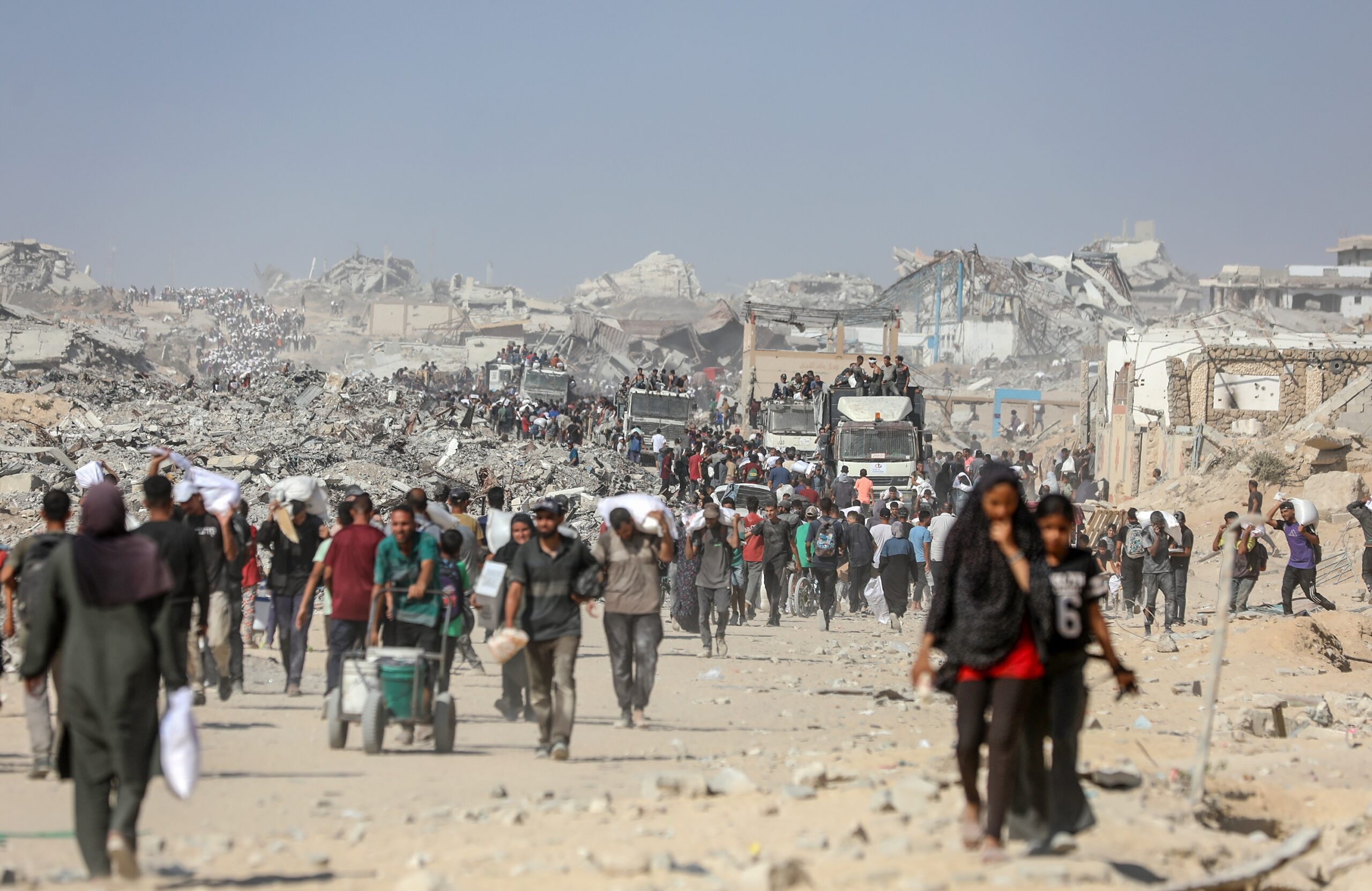Amid the chaos of the Ukraine crisis, one question proves particularly elusive. Why did Vladimir Putin make his move now?
A central question for historians and social scientists confronted with the drama of major events is “why?” How are events to be explained, and what kind of factors come into play in explaining them? The late Charles Tilly even wrote a book simply entitled Why?, seeking to characterise the different kinds of reasoning that might be offered to different audiences. But an equally important question is asked less often than it should be: why now? It is not an entirely neglected question, and discussions of the outbreak of World War I have occasionally used the metaphor of “powder keg and spark” to account for both the tensions that had built up in Europe before the war and the role of the assassination of Archduke Franz Ferdinand in Sarajevo in lighting the fuse for an explosion. Too often, however, the question is overlooked.
The “why now?” question is worth posing in the light of Russia’s invasion of Ukraine. The “NATO expansion” explanation — one that seems more popular with realist international relations scholars than with genuine specialists on Russia — does not provide much of an answer. This writer was present at the Bucharest speech by George W. Bush in 2008 that signalled US support for a NATO Membership Action Plan for Ukraine, and Ukraine is hardly closer to NATO membership now than it was then. Explanations pointing to the potency of Russian nationalism and hostility to Ukrainian nationalism are much more compelling, especially given the preoccupation with Ukraine of President Putin, very much an old-style, Soviet-era secret policeman (chekist) — but again do not offer much help in explaining “why now?”
Somewhat more useful are explanations focusing on the failure of deterrence, but it is important to distinguish between different types of deterrent strategy. The display of Western unity that followed Russia’s invasion can easily distract attention from the failure of specific deterrence that preceded it. The Biden administration’s detailed warnings about the Russian build-up on Ukraine’s borders reflected high-quality information-gathering on the part of the US but did little to stop Russia in its tracks. To be fair, it may be that nothing short of a bilateral security pact between Washington and Kyiv, backed up by the deployment of US forces as a tripwire, would have blunted the momentum to invade — although Washington’s explicit statements, pre-invasion, that US troops would not be deployed to defend Ukraine must have been as unsettling for Kyiv as they were comforting for Moscow.
More specifically, however, the invasion of Ukraine arguably reflected a further problem, namely the failure of general deterrence — that is, the creation through word and deed of apprehension in the mind of an aggressive autocrat that a democratic superpower such as the United States might live up to its own rhetoric about the protection of democracy and freedom. And if one wishes to answer the question of why such general deterrence might have failed in 2022, one need not look much further than the case of Afghanistan in 2021.
Afghanistan, unlike Ukraine, was a formally designated “major non-NATO ally” of the United States. Successive US administrations had invested heavily in state-building in Afghanistan after the 9/11 terrorist attacks prompted the military operation that overthrew the extremist Taliban regime that had provided hospitality to Osama bin Laden and his Al-Qaeda organisation. But with Pakistan’s provision of sanctuaries for the Taliban presenting the Afghan government with an enduring problem of insurgency, the Trump administration in 2020 decided to cut and run, going behind the back of the Afghan government to sign what was, in effect, an exit agreement for the US with the Taliban.
This was not a reflection of the cost of Afghanistan for the United States. The bulk of US forces, following a “surge” under President Barack Obama, had been extracted by the end of 2014, and what remained were low-cost but critical “niche” capabilities supplied by a relatively small number of US troops and civilian contractors. Direct assistance to the Afghan government in 2020 amounted to only 0.0007 percent of US federal outlays, and the cost of US military activities in Afghanistan only 0.006 percent. In the entire period from the end of 2014 to 15 August 2021, the US experienced only 64 “hostile deaths” in Afghanistan, barely more than the average number of non-suicide gunshot deaths per day in the United States in 2020. By comparison, between October 2001 and August 2021, the national military and police in Afghanistan suffered 69,095 direct war deaths, a figure nearly 30 times greater than the number of direct war deaths suffered by the US military in Afghanistan in the same period.
When President Joe Biden opted to stick to the exit deal that his predecessor had cut, it signed a death warrant for the operational capability of the Afghan National Defence and Security Forces and set the scene for the collapse of the government and the Taliban takeover on 15 August. This was followed by a chaotic evacuation which saw many vulnerable pro-Western Afghans abandoned to face the Taliban. Darkness fell on Afghanistan with a vengeance.
While US isolationists of both conservative and progressive variety lent support to Biden’s approach, the dangers it carried beyond Afghanistan have become increasingly clear. The international environment in 2022 is different from that which confronted the US when it retreated from Saigon in April 1975. China at that time was an inward-looking power, and relations with the Soviet Union were in a phase of détente, of which the August 1975 Helsinki Accords proved a high point. By 2021, the revisionist dispositions of both China and Russia were on full display, and Ukrainians immediately realised that the shambolic US retreat from Afghanistan could have major implications for their own security.
The danger that the US exit from Afghanistan could inspire troublemakers elsewhere nonetheless seemed to have completely escaped the attention of US policymakers. Yet no one should have been surprised at what then ensued. Former Russian Foreign Minister Andrei Kozyrev captured this in a 7 March 2022 social media posting, highlighting the West’s “geopolitical condition” as part of Putin’s calculus in invading Ukraine, with Putin long viewing Biden as “mentally inept” and the EU as weak. “And then,” Kozyrev continued, “the U.S. botched its withdrawal from Afghanistan, solidifying this narrative.”
Putin’s invasion of Ukraine was illegal and immoral and risked creating a real quagmire for Russia’s forces, but in the circumstances, it was hardly irrational to count on a supine US response. The all-too-recent spectacle of the US abandoning a pro-Western major non-NATO ally, namely Afghanistan, helps answer the “why now?” question with respect to the Russian invasion of Ukraine. If, as seems more than likely, the two events were connected, any calculation that the costs of sacrificing Afghanistan would be trivial begins to look highly suspect.
Sadly, in this there is nothing new. In August 1939, as Hitler planned his invasion of Poland, he responded to concerns of his generals by pointing to the British and French sacrifice of Czechoslovakia at the Munich conference the previous year. “Our enemies are small worms,” he remarked. “I saw them in Munich.” It rarely pays to look like a small worm, and Biden seemingly forgot that when he turned his back on Afghanistan, the Russians were watching.
William Maley AM FAIIA is Emeritus Professor of Diplomacy at The Australian National University, a Fellow of the Australian Institute of International Affairs, and author of The Afghanistan Wars (2021) and Diplomacy, Communication and Peace: Selected Essays (2021).
This article is published under a Creative Commons License and may be republished with attribution.




